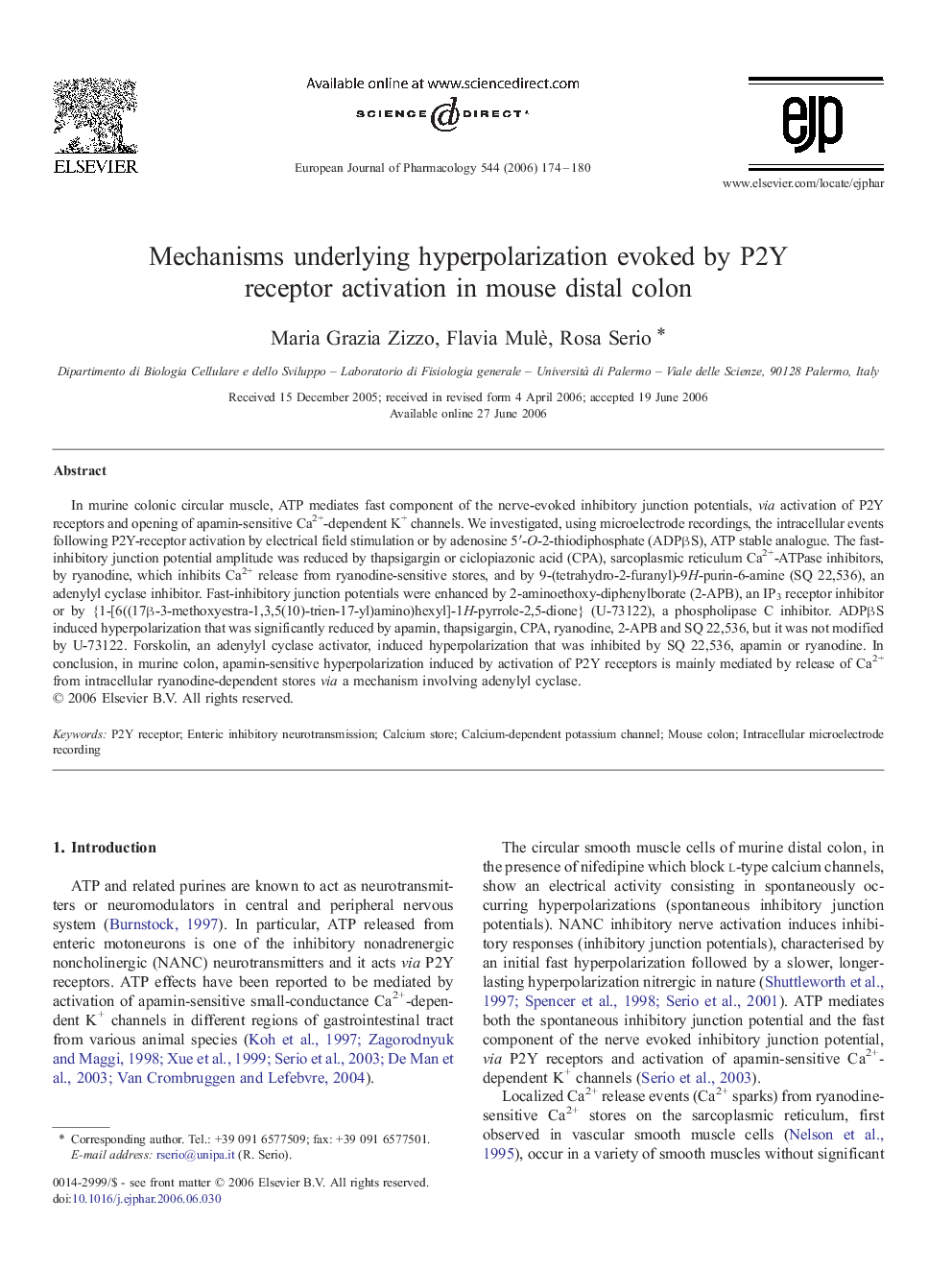| Article ID | Journal | Published Year | Pages | File Type |
|---|---|---|---|---|
| 2536918 | European Journal of Pharmacology | 2006 | 7 Pages |
In murine colonic circular muscle, ATP mediates fast component of the nerve-evoked inhibitory junction potentials, via activation of P2Y receptors and opening of apamin-sensitive Ca2+-dependent K+ channels. We investigated, using microelectrode recordings, the intracellular events following P2Y-receptor activation by electrical field stimulation or by adenosine 5′-O-2-thiodiphosphate (ADPβS), ATP stable analogue. The fast-inhibitory junction potential amplitude was reduced by thapsigargin or ciclopiazonic acid (CPA), sarcoplasmic reticulum Ca2+-ATPase inhibitors, by ryanodine, which inhibits Ca2+ release from ryanodine-sensitive stores, and by 9-(tetrahydro-2-furanyl)-9H-purin-6-amine (SQ 22,536), an adenylyl cyclase inhibitor. Fast-inhibitory junction potentials were enhanced by 2-aminoethoxy-diphenylborate (2-APB), an IP3 receptor inhibitor or by {1-[6((17β-3-methoxyestra-1,3,5(10)-trien-17-yl)amino)hexyl]-1H-pyrrole-2,5-dione} (U-73122), a phospholipase C inhibitor. ADPβS induced hyperpolarization that was significantly reduced by apamin, thapsigargin, CPA, ryanodine, 2-APB and SQ 22,536, but it was not modified by U-73122. Forskolin, an adenylyl cyclase activator, induced hyperpolarization that was inhibited by SQ 22,536, apamin or ryanodine. In conclusion, in murine colon, apamin-sensitive hyperpolarization induced by activation of P2Y receptors is mainly mediated by release of Ca2+ from intracellular ryanodine-dependent stores via a mechanism involving adenylyl cyclase.
